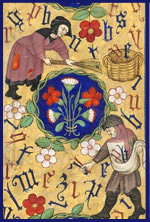Libraries at University of Nebraska-Lincoln

Copyright, Fair Use, Scholarly Communication, etc.
Document Type
Article
Date of this Version
2-2015
Citation
College Art Association, Best Practices in Fair Use for the Visual Arts, FEBRUARY 2015.
Abstract
The mission of the College Art Association (CAA) is to promote the visual arts and their understanding through advocacy, intellectual engagement, and a commitment to the diversity of practices and practitioners. CAA contributes to the visual arts profession as a whole through scholarly publications, advocacy, exchange of research and new work, and the development of standards and guidelines that reflect the best practices of the field. The Code of Best Practices in Fair Use for the Visual Arts is based on a consensus of professionals in the visual arts who use copyrighted images, texts, and other materials in their creative and scholarly work and who, through discussion groups, identified best practices for using such materials. They included art and architectural historians, artists, designers, curators, museum directors, educators, rights and reproduction officers, and editors at scholarly publishers and journals. CAA is grateful to Lead Principal Investigators Patricia Aufderheide and Peter Jaszi of American University for their oversight and execution of this project, including their surveying nearly 12,000 CAA members on their use of copyrighted materials, conducting 100 interviews to identify key issues, facilitating discussions with another 120 visual arts professionals to understand and identify points of consensus concerning best practices in use of such materials and, finally, articulating that consensus in the Code of Best Practices. CAA expresses its deep appreciation to the many visual arts professionals who gave their time and expertise to this project. Special thanks are due to the other principal investigators—Linda Downs, Anne Collins Goodyear, under whose CAA presidency the project began, and Jeffrey Cunard—as well as to Gretchen Wagner, who, with Jeffrey, cochaired CAA’s Task Force on Fair Use. CAA also thanks the project advisors, the Legal Advisory Committee, the Task Force on Fair Use, its Committee on Intellectual Property, and its Professional Practices Committee for expert assistance, and Janet Landay, project manager, for orchestrating all logistics. A full list of participants is set out in the credits that follow the Code. Finally, CAA acknowledges the generous support of the Andrew W. Mellon Foundation and the Samuel H. Kress Foundation, without which this project would not have been possible.
Included in
Art Practice Commons, Communications Law Commons, Digital Humanities Commons, Fine Arts Commons, Intellectual Property Law Commons


Comments
Please feel free to reproduce this work in its entirety. For excerpts, please employ fair use.
Note to Readers: This Code of Best Practices is available online at the College Art Association website: www.collegeart.org/fair-use. In conjunction with the publication, CAA’s website also includes Frequently Asked Questions and other materials that facilitate the use of the Code. The Code and related materials are also available online on the websites of American University’s Center for Media and Social Impact (www.cmsimpact.org/fair-use) and the Washington College of Law’s Program on Information Justice and Intellectual Property (www.wcl.american.edu/pijip/go/fair-use).